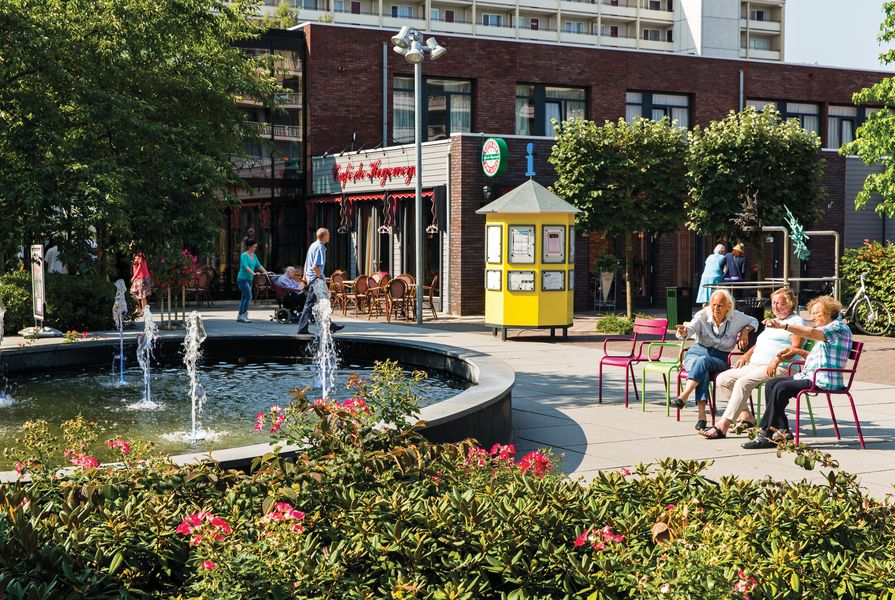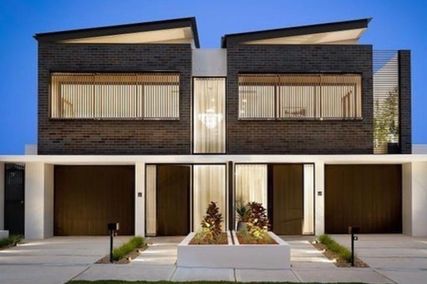It is 2021. By 2050, if we survive the climate crisis (and any further pandemics), most reading this will be over 60 years old. And by 2100, according to a recent Lancet paper, there will be more than double the number of over-80-year-olds than under- 5-year-olds in the world – a tenfold increase from 2017’s almost one-to-five ratio.1 Population ageing is real and, along with climate change, it is arguably one of the key challenges for the twenty-first century. This proportion of older people has never lived as long before but, as with climate change, we have the evidence and foreknowledge to be able to prepare and the built environment can play a significant role.
But what is ageing? Perception is not necessarily the same as reality. When you woke up this morning, you were older than you were yesterday. Ageing is as normal as breathing – we are ageing from the day we are born. But, in common usage, “ageing” tends to be understood as something else, something bad – an unfortunate, inevitable fate.
It is not helpful that we live in a society where ageism (the only “ism” that affects everyone) is rife and engrained. We see it in advertising, in employment, in our language and in our mindsets. In reality, there are clear benefits to getting older, with studies showing that older people are generally much happier than younger people.2 Many cultures, including this country’s own First Nations people, value and respect older people for, among other things, their valuable life experience, knowledge and insight.
Getting older per se is not the problem, but our needs alter as our physical strength and mobility decrease and our lifestyles change. How can we, as architects, ensure that the built environment rises up to meet these needs? Again, there is a difference between perception and reality. When most of us think of buildings for older people, we probably think of aged care homes and retirement villages because that’s where they (note the third person) end up … isn’t it?
Although these facilities will always be needed, currently, only about 6 percent of people over 65 choose to live in a retirement village and about the same percentage live in residential aged care.3 These ratios do rise with increasing age but, even so, most older people don’t live here. “Phew,” you might say (note the second person).
Most people prefer to age in place and do so in their homes. This is good and bad. On the good side, it keeps people in their communities, combating isolation and loneliness. It also makes sound economic sense: providing care at a person’s home costs the government a fraction of the cost of residential aged care. On the downside, these houses may be unsuitable: too big and hard to maintain, inaccessible and isolated if no transport is available.
For this dossier, we wanted to take a broader view of architecture for ageing. Rather than looking only at how to make residential aged care and retirement villages better, we explore how to design a more age-friendly environment. While much of the other supportive infrastructure – like health and finance – is well established for an ageing population, what built infrastructure will support this social shift? The five essays here start to address how the built environment can adapt, support and promote age-friendliness, embedding it and normalizing it to create a richer, more inclusive living environment for all.
Because most people choose to age in their own homes, these homes must be made more resilient to meet changing needs. The recent National Construction Code decision to mandate the Livable Housing Design Guidelines ’ silver compliance level for housing4 is a positive step, but what else can be done? Multi-generational housing has many benefits, for older and younger people alike. In “Ageing well in the bluefields,” Damian Madigan from the University of South Australia discusses the work he has been doing with the South Australian government in collaboration with four Adelaide councils. “Bluefield” housing uses the existing fabric of widespread single-lot housing to create more resilient, sustainable and inclusive dwellings within our suburbs, where most people live.
With more people living longer than ever before, the question of how and where older people might live in the future is pertinent. In “Making the most of life: The longevity bonus is a design issue,” architect Rosemary Kennedy and gerontologist Laurie Buys discuss the ideas that came out of a co-design charrette they ran in Brisbane. The charrette envisioned several future scenarios that incorporate a more positive and inclusive model for ageing – and one that might abolish the need for retirement villages.
We don’t live our lives in isolation. The pandemic has underlined how much we value getting out and about. Exercising body and mind – engaging with the world, including the natural and built environments – is clearly vital to our wellbeing. So, how can our neighbourhoods, towns and cities foster healthy and active ageing? Safiah Moore and Greyson Clark of Arup consider age-friendly city design initiatives from around the world, while Georgia Vitale of Grimshaw turns the lens on Sydney.
Recognition of culture and lifestyle is critical as people grow older and their care needs increase. While there are some examples for culturally and linguistically diverse communities, very little research has been done on the needs of First Nations people in Australia. Yim Eng Ng, an architect from Brisbane, recognized this somewhat shameful gap and has been carrying out her PhD on the subject. Engaging with Aboriginal and Torres Strait Islander people living in aged care facilities in South East Queensland, she sought to understand their needs and how these fit into the existing aged care framework. In “Country, family, kin and community: Architectural considerations for Indigenous aged care,” she suggests that some alternative approaches are needed.
And finally, we look at design for dementia. Why? Dementia is the second leading cause of death in Australia and, without a medical breakthrough, it is expected that one million people will be living with this degenerative disease by the 2050s. It is clear that architecture can improve the lives of people living with dementia – or make it worse! We gathered a roundtable of experts to discuss the importance of getting the design right.
Our needs change throughout our lives. Older people are people first; it is dehumanizing and disrespectful to treat them as a singular problem to be solved. Being old is not a disease and older people are not a different species – “they” are us, plus a few years. The essays in this dossier show how architects, with their particular skill set, can envision a better way of living for all. We are creating the world we want to live in now and into the future. How do we want to live (note first person)?
1. Interpreted from a BBC article by James Gallagher (bbc.com/news/health-53409521, accessed 6 July 2021), which referred to the following study: Stein Emil Vollset et al, “Fertility, mortality, migration, and population scenarios for 195 countries and territories from 2017 to 2100: a forecasting analysis for the Global Burden of Disease Study,” The Lancet , vol 396 no 10258, 17 October 2020, 1285–1306, doi.org/10.1016/S0140-6736(20)30677-2.
2. See, for example, the American Psychological Association, “Emotional fitness in aging: Older is happier,” 28 November 2005, apa.org/research/action/emotional (accessed 6 July 2021).
3. Property Council of Australia, “National overview of the retirement village sector,” October 2014, grantthornton. com.au/globalassets/1.-member-firms/australian-website/ industry/hac/pdfs/gtal_2014_hac_national-overview-of- the-retirement-village-sector.pdf (accessed 6 July 2021). This figure is based on a likely increase from the 184,000 people living in retirement villages in 2014 to approximately 200,000 of the 3.8 million people over 65 today (Australian Bureau of Statistics). For those in aged care, see abs.gov.au/ ausstats/abs@.nsf/Lookup/4430.0main+features302015.
4. “Minimum housing accessibility standards to be adopted nationally,” ArchitectureAU, 3 May 2021, architectureau.com/ articles/accessibility-standards (accessed 6 July 2021).
Source

Discussion
Published online: 23 Nov 2021
Words:
Guy Luscombe
Images:
Paul Tolenaar
Issue
Architecture Australia, September 2021
















